ancient wisdoms,
today’s practices
At no time in the history of the planet have India’s stress-busting, all-encompassing therapies had more importance. While we strive to improve material gains, we often neglect the spiritual, the physical and the mental. However, with stressful lifestyles taking their toll, taking time out to concentrate on ourselves is no longer a treat — it’s a necessity. This is where India’s age-old traditional practices come in.
Whether you travel to India to visit a spa, to try to “find yourself”, to experience some medical care, or to spend some relaxing time with friends or family, you are almost certain to come across some of these ancient practices. Even though the country is modernizing at a rapid rate, everyone — on some level or another — is tied to its deep-rooted traditions.
Ancient Healing
Many of these age-old traditions are explored in this book. We get to the core of the country’s medical systems — Ayurveda, Unani and Siddha — and explore its history of herbal healing and ancient beauty procedures. The mind, body, spirit practices of yoga, meditation and pranayama are showcased in depth, while related cultural phenomena such as temple and household habits and gemology are also considered. Some of these ideas will be familiar to readers, others will be totally new. We’ll take you through the myriad of wonders that has emerged from this extraordinary, exotic subcontinent, all the while explaining how past wisdom has relevance in today’s world.
Ayurveda and yoga are probably the most well known of the ancient modalities outside India — and both seek to encompass much more than physical wellbeing. They are covered in depth in the ancient texts or Vedas and there are countless written instructions for both. Even though they weren’t traditionally practiced together, today they are finding synergy. “What’s interesting about India’s systems,” explains one Ayurvedic physician, “is that they often incorporate more than one regime. Methods of healing like Ayurveda include a lifestyle regimen, yoga, aroma, meditation, gems, amulets, herbs, diet, jyotishi (astrology), color and more.” It is this holistic approach that is so exciting.

Utilizing the purifying properties of mud is an ancient practice that continues in India to this day. Taking the earth element from the panchamahabhut or “five great elements”, it cleanses skin and boosts metabolism.
History of Ayurveda
Translated from Sanskrit as the “Science of Life”, Ayurveda was first mentioned in the verses of the Rig Veda, the first of the Vedas or Hindu sacred texts. Here there is reference to panchamahabhut (the five basic elements of the entire creation), and the three doshas or primary forces of prana or vata (air), agni or pitta (fire) and soma or kapha (water and earth) as comprising the basic principles of Ayurveda. However, there is much more detail in an upaveda (subsection) of the Atharva, the fourth Veda, written some time during 3,000 to 2,000 BC. Here, Ayurveda is documented more specifically: it is described as knowledge of self-healing or holistic healing, with the idea that everything is interrelated, yet still unique. The texts stated that if Ayurveda was applied on an individual basis in people’s everyday lives using diet, massage, oils, herbs and exercise, practitioners could be healthy and disease-free.
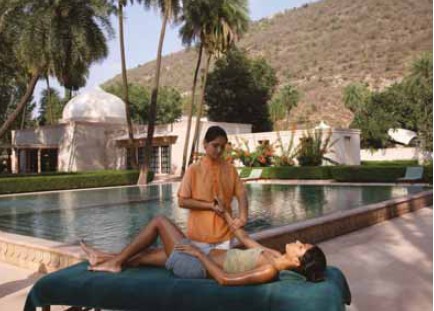
Wellness treatment being administered at the luxury spa at Amanbagh.
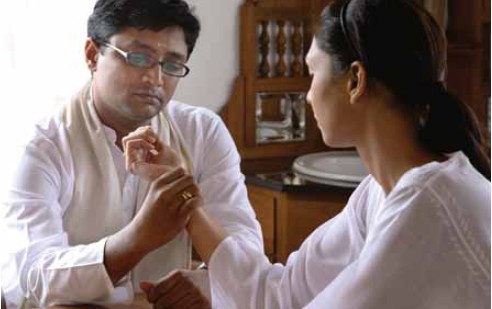
Taking the pulse is one of the first indicators in Ayurvedic diagnosis.
Around the turn of the first millennium BC the treatise known as the Charaka Samhita, the most referred Ayurvedic text on internal medicine, appeared. Believed to have been written by the great sage-physician Charaka, it explained the logic and philosophy of Ayurvedic medicine. Written in the form of a symposium wherein groups of Ayurvedic scholars take up a series of topics for discussion, it is written in verse in keeping with the Vedic oral tradition of conserving knowledge. It therefore seems likely that Ayurveda had been in existence for many hundreds, if not thousands, of years beforehand.

A spiritual ascetic or sadhu attends to a supplicant.

Yoga is recommended along with Ayurveda for total wellbeing.
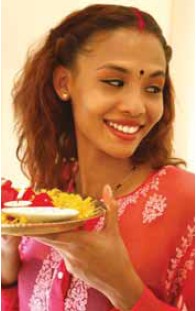
A traditional Indian welcome.
Around the same time, the Sushruta Samhita appeared. It comprised knowledge about prosthetic surgery to replace limbs, cosmetic surgery, caesarian operations and even brain surgery. Sushruta is famous for his innovation of cosmetic surgery on the nose known as rhinoplasty, an interesting fact as he lived two centuries before Hippocrates, the Greek father of Western medicine. Around 500 AD, Vagbhata compiled the third major treatise on Ayurveda, Astanga Hridaya. It contained knowledge from both previous books, but also new information on diseases and cures. It is the text of choice for many practicing Ayurvedic physicians because it is a precise condensation of the two earlier texts.
There were, of course, many other useful reference texts, and it is documented that Ayurveda became entrenched in Indian life between 1,000 BC and 800 AD. Both Hindus and Buddhists maintained the academic progress of Ayurveda, and also ensured that the science was made as publicly available as possible. Medicinal herbs were planted, hospitals were formed, and the art of nursing (as described by Charaka) was widely systematized. But it wasn’t until the Buddhist period (323 BC to 642 AD) that Ayurveda began to be exported outside India’s shores. During this time Buddhist missionaries and monks took knowledge of Ayurveda, along with other aspects of Indian culture, to Europe (Rome and Greece), the Middle East (Baghdad) and China. Closer to home, the neighboring countries of Sri Lanka, Tibet, Thailand, Burma and Indonesia all accepted its teachings. In fact, its influence can still be seen in many of their healing systems: Acupressure, for example, is a direct descendent of marma massage.
In India, Ayurveda’s heyday was probably from the 6th century to the 10th century AD: During this time, many universities and teaching hospitals were founded to cater to students from all over the world, and there are numerous references to the efficacy of the Indian system of medicine. But by the 12th century, Ayurveda’s influence began to wane. Waves of Muslim invaders in northern India from the 10th to the 12th centuries burned books, destroyed hospitals and libraries, and slaughtered Hindu sages and Buddhist monks as infidels. They brought with them their own hakims or Unani doctors (a form of medicine formulated by Arabian physicians, see pages 36–37) — so the system fell into decline.
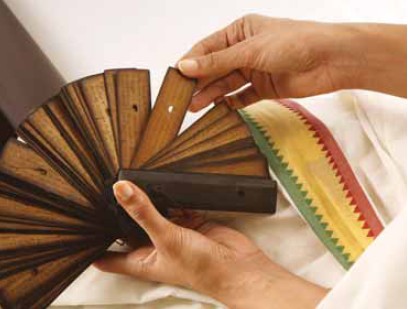
Early Ayurvedic texts were engraved on palm leaf manuscripts.
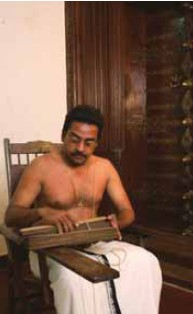
Ayurvedic physician in Kerala.
This was further exacerbated by the arrival of the British. The East India Company denied state patronage to Ayurveda, closed down existing schools and government medical colleges, and substituted it with Western medicine. Of course, at a local level, Ayurveda continued to be practiced, but it wasn’t until Indian Independence that official initiatives were taken to revitalize indigenous medical forms — and Ayurveda once again began to rise.
What is Ayurveda?
Ayurveda advocates that each person is born with a basic constitution or genetic make-up called prakruti in Sanskrit. If there is a changing nature or situation in the body during one’s life (vikruti), imbalance occurs. This may pass over time or may become a disease. The aims of Ayurveda are ayus (“long life”) and arogya (“diseaselessness“) with ultimate spiritual goals. Health is achieved by balancing what are known as the bodily humors or doshas at all levels, according to an individual’s constitution, lifestyle and nature. There are many similar holistic medical systems in other communities, including the Chinese, American Indians, Africans and South Americans.
Diagnosis
Before any Ayurvedic treatment is prescribed, patients first of all undertake a consultation with an Ayurvedic physician to ascertain their body type and present health status. “Body type is the variation in percentage of vatha, pitta and kapha (air, fire and water) in our body,” explains Ayurvedic physician Dr Yogesh. “Based on the present dosha state or vikruti, suitable therapies, oils, medications, advice or more may be prescribed.”
Most Ayurvedic physicians point out that Ayurvedic treatments vary from place to place, doctor to doctor and according to the nature of the client/doctor relationship. This makes it confusing to many, and difficult to analyze, research and compare with other medical systems. “However, the purpose is always the same,” explains Dr Renja Raphel, “Each body has its own defined constitution from birth to death that is affected by many different things. We doctors try to bring the body back to equilibrium: we find out what is lacking and modify it, we add things and we request changes in diets, climates, stress levels, lifestyle habits and more.” He goes on to add that the body has the power to help itself; Ayurveda simply helps it with the healing process.

Shirodhara or the pouring of medicated oil on to the forehead or “third eye” is one of Ayurveda’s best known therapies outside India.

A student of the Vedas seeks understanding through a copy of one of the treatises in Sanskrit.
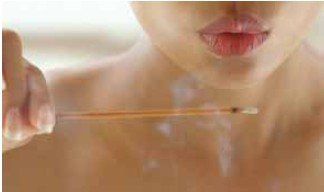
The use of agarabathi or incense sticks to promote clean air is an age-old practice.
Diagnosis is an extremely important part of Ayurveda. In a clinic or hospital, it is undertaken first thing in the morning before the patient has consumed anything. The doctor inspects the tissues and the skin; examines the “nine doors” (two eyes, two ears, two nostrils, mouth and throat, anus and penis or vulva) and their secretions; takes faeces and urine samples to assess the analam or digestive fire; takes the patient’s pulse and assesses body temperature; interrogates the patient on their sleep patterns, health, lifestyle habits, climate preferences and more; and generally takes a great deal of time to consider the patient as a whole. Nothing can be prescribed without this extremely thorough consultation.
Many visitors to India aren’t seeking medical treatment, but are intrigued by this ancient wellness system and want to try a treatment. This is perfectly possible in a spa whre the consultation is shorter, but still important. “At a spa, we look at darshana or appearance, sparshana or touch ie pulse and body temperature, and undertake prasnai or discussion,” explains Dr Yogesh, “this gives us enough information to decide on a patient’s basic imbalances and which medicated oils we should use in a treatment.”
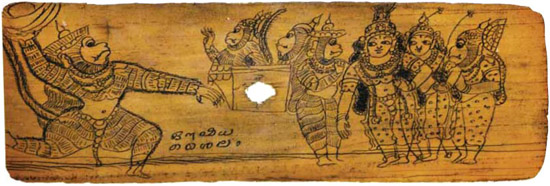
A leaf from the Ramayana in Mahalayam called “Medicine Mountain”: it depicts the monkey god Hanuman using a mountain of medicinal herbs to help his fellow monkeys. Even in the Epics, much is made of India’s healing heritage.

Ayurvedic equipment from Kerala: medicine box, oil containers, mortar and pestle.
Prognosis and Treatment
After the diagnosis, the doctor decides whether the disease falls into one of four categories: Curable with ease, curable with difficulty, ameliorable, or incurable. At this point an astrologer may be consulted to find the best time and place for treatments to take place. Sri Krishnakumar, the managing director of one of the most famous Ayurvedic hospitals in India, the Arya Vaidya Chikitsalayam in Coimbatore, says that every avenue must be pursued for the benefit of the patient. “Everything is inter-related,” he explains, “the mind and the body, the person and the universe, the disease and the lifestyle. A consultation with an astrologer may bring up something that the doctor has not noticed.”
This is one example of how Ayurveda may be difficult for non-Indians to grasp. Skepticism of such practices runs high in the West, even though looking holistically at patients and problems is increasingly gaining credence. Another difficulty may be had with some of the treatments.
These are literally multi-faceted and depend on a huge number of factors including disease, client personality and habits, work practices, dosha imbalance, climate, and many more. The basic premise is to cleanse and detoxify the body and balance the doshas, restoring them to their original state of equilibrium. But how this is achieved varies hugely. There are hundreds of levels of practice, from official to folk, and thousands of prescriptions — and no treatment is a panacea. One thing is for sure though: a course of treatments is rarely shorter than three weeks, and after the course is completed, follow-up is very important.
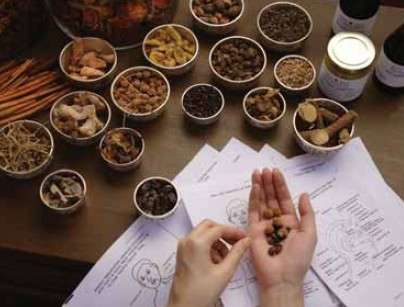
India is home to a vast cornucopaeia of healing plants; many of Ayurveda’s ancient recipes are now supported by modern scientific research.
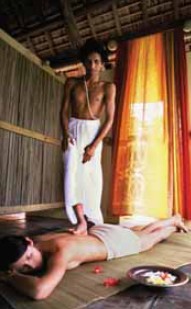
Ancient form of pressure point massage.
In the following pages, information on some common therapies is given, but if you visit an Ayurvedic doctor, you may expect to be prescribed any — or many — of the following: purification therapies, medication, special diet, herbs and minerals, massage and other body work, exercise, yoga, meditation, aromatherapy, flower and gem essences, advise on lifestyle, work and climate change, and acupressure.
All the medicines, oils and powders used in treatments are 100 percent natural and rely on India’s huge pharmacopoeia. “Ayurvedic texts contain the details of a staggering number of plant ingredients, minerals, metals and other natural substances, along with their properties, their methods of collection and extraction, as well as specific combinations of complementary herbs,” says Shahnaz Husain, herbal ambassador and producer, “The specific processing methods and well-known combinations enhance the efficacy of the treatments. Many of the formulations are still used with great success today.”
Ayurveda in Spas
Even though some treatments are less common nowadays, many are still to be found both at grassroots level and in the country’s 2,100 Ayurvedic hospitals. They are also increasingly finding their way into spas and retreats. Husain notes: “Ayurvedic treatments are ideal for spa treatments, because they counteract degenerative processes, environmental pollution, toxic build-up and mental stress, all of which have become undesirable features of modern life.” She notes that many people visit a spa particularly to address such modern-day afflictions, and with Ayurveda taking total wellbeing into consideration, its treatments are in line with the aims of most spas.
Some diehard Ayurvedic doctors, with their emphasis on authenticity and historical accuracy, frown on this relatively new spa phenomenon. They believe that Ayurveda should remain in the realm of medicine. Others, however, feel it is a trend to be encouraged — as it advertizes the benefits of this ancient healing system. “As long as the doctors who run such spas differentiate between the clinic and the spa, it is fine,” one doctor told me. He also admitted that the country’s Ayurvedic experiences ricochet wildly from by-the-book, clinical treatments to unhygienic, back-room practices and others that are driven purely by monetary gain.

An old map of India transposed with the body of Shiva, the god of yoga. His head, symbolizing intellect, is found in the Himalayas (his spiritual home), whilst his feet, used for grounding, are found at the tip of the subcontinent.
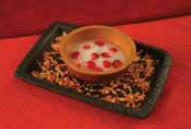
Scented body lotion with rose petals.
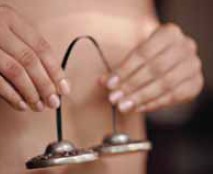
Tibetan chimes rung before a treatment starts.
Unfortunately, there is a problem with standardization, but the government and the medical community are working on ways to rectify this. This book only recommends reputable spas, retreats, clinics and hospitals, and differentiates clearly between the medical and the recreational. With the right environment, proper and safe medicinal care, high standards of cleanliness and pure medication, Ayurveda is a force to be reckoned with.
Rejuvenating the body, soothing the mind, nurturing the spirit — India’s therapies open up possibilities we never realized we had. Many aim to help a person reach their maximum potential, while others utilize the country’s pharmacopoeia for relaxation, beauty care and rejuvenation. It’s the aim of this book to delve into all of the above; to explain, illustrate and, hopefully, inspire. It isn’t a medical or scientific treatise, more an overview of ancient wellness practices that — finally — are beginning to be appreciated on the global stage.

Abhyangam or Ayurvedic massage given by a Keralan therapist at the spa at Neemrana Fort Palace.